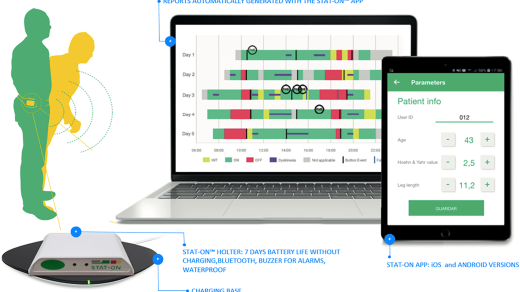
Two small clinical trials revive hope for an old idea: Cells injected into the brain might replace the nerve cells that die in Parkinson’s disease. The studies, published April 16 in Nature, represent early steps for stem cell therapies that aim to replace these dead cells in the brain — and stop Parkinson’s and the movement problems, tremors and rigidity that it brings.
In both trials, scientists injected cells derived from stem cells that would go on to become specialized neurons that pump out the chemical messenger dopamine. These are the crucial cells in the brain that die in Parkinson’s disease, a relentless neurological disease that is estimated to affect over 8 million people worldwide.
Together, the results “mark an encouraging first step in stem cell–based therapy for Parkinson’s disease, validating the concept that stem cell–derived dopaminergic progenitors can safely and meaningfully impact disease symptoms,” says neurologist and researcher Ole Isacson of Harvard Medical School and McLean Hospital in Belmont, Mass.
This isn’t a new idea. Decades ago, scientists attempted to replace these missing cells with transplants of fetal brain tissue. The attempts were beset with problems and ethical objections, and ultimately didn’t work. But some patients in those early trials did improve. “There have been times of hype versus hope, and ‘Is this for real, or is this not for real?’” says Viviane Tabar, a neurosurgeon and stem cell biologist at Memorial Sloan Kettering Cancer Center in New York City and coauthor of one of the new studies. The current findings point toward hope, she says.
Both of the new studies were small: 12 patients in Tabar’s study and seven in the other. These trials were designed to test whether injections of cells derived from stem cells are safe. Those earlier studies on fetal brain tissue left some of the volunteers with movement problems that were distinct from those caused by Parkinson’s, Tabar says. Other worries included bleeding from where the tube full of cells enters the brain. Scientists also fretted about uncontrolled growth of these added cells, a scenario that could lead to tumors.
None of these scenarios happened. “The main conclusion is that we confirmed the safety [of these kinds of cells],” says Jun Takahashi, coauthor of the other study and neurosurgeon and researcher at Kyoto University in Japan.
In both studies, some participants experienced negative events that may have been related to the immune-suppressing drugs they needed to take with these foreign cells. Other scientists, including Isacson, get around the need for these drugs by using stem cells that are made from a person’s own cells. Using a person’s own cells for the starting material may be more time consuming and more variable, Tabar says. But, Isacson notes, cells derived from the person they’re meant to treat “may offer additional advantages in immunological compatibility, functional integration and patient outcomes.” Isacson holds patents and licenses for possible therapies that use a patient’s own cells.
The studies weren’t designed to test whether added dopamine-producing cells improved symptoms. But there were hints that these cells did help, at least for some people. “With the caveats of a small study, there were signs of … considerable or notable effects on Parkinson’s [symptoms],” Tabar says. “It’s early days, but it gives us optimism that the treatment may really enhance quality of life for these patients.”
Similarly, Takahashi and colleagues saw signs of dopamine being produced in the brains of study participants and symptoms improving for some of the volunteers, suggesting that this approach could be effective. But scientists won’t know without larger studies. “We need multicenter, large-sample trials with multiple controls,” Takahashi says.
Those trials are coming. Later this year, scientists will begin a larger trial with about 100 people using the same cells Tabar used. Tabar has financial interests in BlueRock Therapeutics, the cell therapy company that sponsored the current Phase I clinical trial that she worked on and will also sponsor the larger trial. That study will be double-blind, meaning neither the patients nor the clinicians examining them will know who received cells. Takahashi and colleagues are also collaborating with a pharmaceutical company on a possible clinical trial, he says.
Get the source article here


